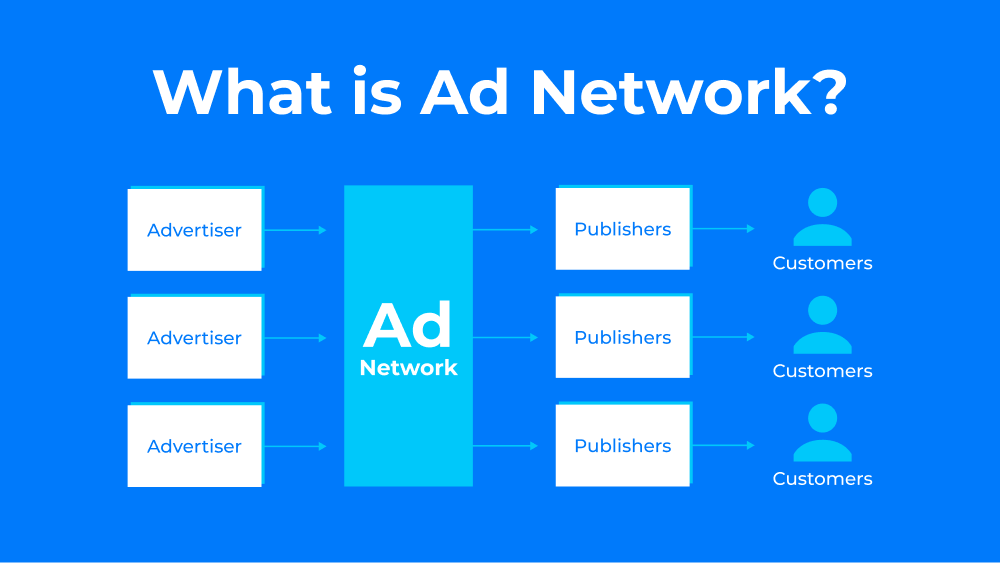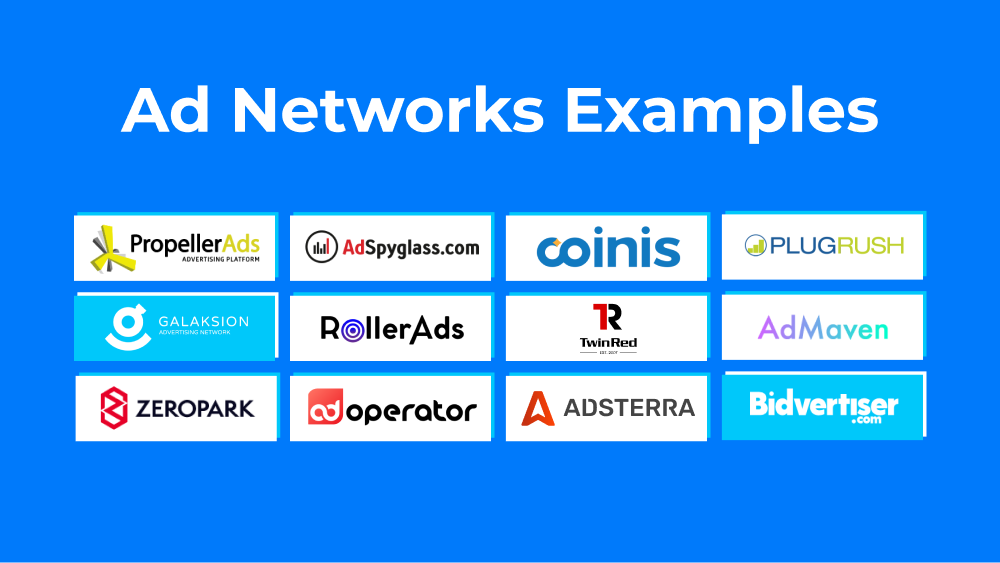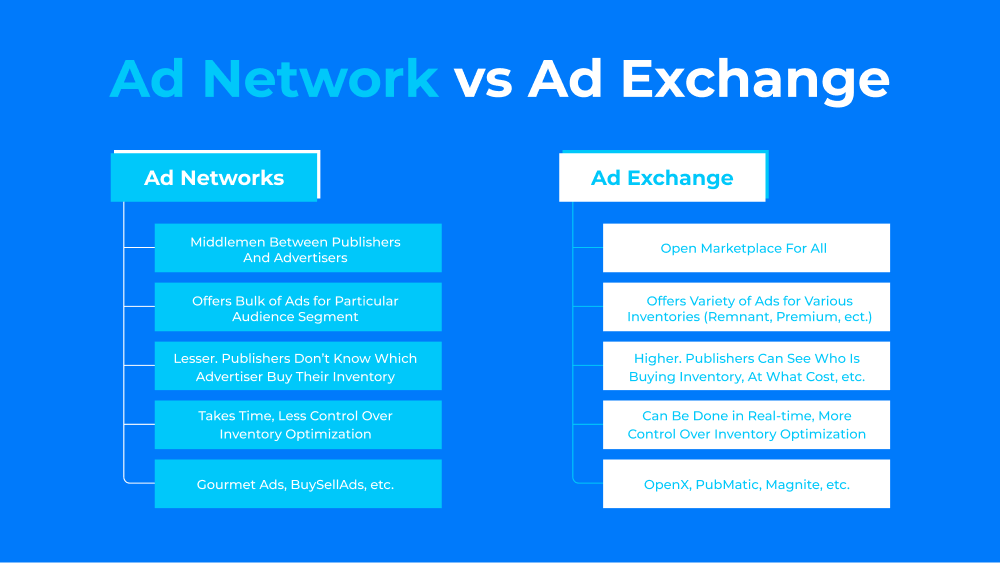In the early days of print publishers transitioning to the digital realm, they quickly realized the importance of generating revenue online. Their primary source of income had been advertising, so they set out to replicate this model in the online world. Monetizing their content through display ads seemed like the most logical approach.
Publishers could sell advertising space directly to interested advertisers, but the process was not without risk, as there was always the possibility of unsold inventory. Consequently, they needed a platform to sell their remnant inventory, and thus arose the need for such a system.
That’s where the ad network came in. If you don’t know what it is or how it works, it’s time to close that gap in your knowledge.
Table of Contents
What is an Ad Network?
Digital ad accounts for about 50% of all advertising-related spending in the world. Therefore, now digital advertising is a powerful tool that modern advertisers can use.
An ad network is a special platform that acts as an intermediary between advertising market players. In digital advertising, there are 2 major components. The first one is the publisher and the second one is the advertiser. It is between them how the ad network operates.

In the modern world, it is used in online marketing and digital media. For a simpler understanding of the essence of network advertising, imagine a broker. Its task is to collect many impressions using the resources of different publishers. After that, they put the collected impressions up for sale. An advertiser interested in a particular display buys it as a digital product.
Now publishers are concerned about finding the right and effective ad networks that will allow them to expose affordable ad space to sell and earn. On the other side, advertisers are exploring the available ad networks in an attempt to find an effective tool to fulfill their goals and needs.
Evolution of Ad Networks
Ad networks, just like digital advertising, appeared almost simultaneously. It happened in the mid-90s of the last century. The emergence of new sites has led to the creation of all kinds of digital publishers on the Internet.
Even then, online advertising was in demand. But the fragmented nature of the proposals did not provide the desired effect. As a result, advertisers were rarely able to find their target audience using the tools available to them. Besides, publishers could not sell inventory on favorable terms. There was the problem of the supply being unable to meet the growing demand. The reason is simple – the infrastructure is weak in its effectiveness.
The problem of low efficiency was solved using advertising networks. They represented the publisher, which helped facilitate the whole process.
Interestingly, initially, ad networks only collected residual traffic that could not be sold through direct deals. Prices were set low. So they sold illiquid digital goods. But soon the situation changed.
How do ad networks work?
Ad networks receive inventory from publishers. After that, it sells the resulting inventory to interested advertisers.
For those who are interested in learning about the principles of operation, we advise you to get acquainted with the following.
- The ad network consists of numerous different publishers. It allows the advertiser to access the resources they need;
- Advertisers can directly set up a campaign. For these purposes, a control panel from the ad network they have chosen is provided. Another option is to use third-party ad servers. It is a good solution for those who use several networks;
- Advertisers set up all the parameters they need for the campaign to effective work;
- When a chosen advertisement is published, an advertiser can easily choose the order in which banners appear on the website using the modern ad network’s control panel tools. Direct communication with the publisher is not required.
Today it’s hard to sell all your inventory with just one ad network. Although earlier, when there were only fewer websites, this was enough.
Types of Ad Networks
Finding an ad network that fits the bill is rather easy. It is explained by numerous networks adapted to different topics, formats, and audiences that advertising will be aimed at.
There are 4 main types.
- Vertical. Such networks are focused on a specific topic. It can be business, health, cars, etc.;
- Premium. Such networks offer high-quality inventory created by the best and most popular publishers;
- Inventory-specific. Offer advertising resources that belong to a specific type. For example, mobile devices, video;
- Targeted. Gives you some targeting options. These helpful networks are built into the ad server used.

Various factors affect the cost of networking. Some advertising packages are sold at a fixed price. Others take into account the number of clicks, impressions, or bids.
Ad Network vs. Programmatic Ecosystem
The Programmatic modern Ecosystem is a system for auto-buying and also selling online advertising space. With its help, the advertiser is connected with the advertising exchange and impressions using cutting-edge algorithms and server software for automated buying and selling ads. Functioning is carried out with the help of industry-leading oRTB [Real Time Bidding] standard and SSPs [Supply-Side Platform], DSPs [Demand-Side Platform], Ad Exchanges, and DMPs [Data Management Platform] that act as programmatic ecosystem elements.
Conceptually, there are significant differences between a modern programmatic ecosystem and an old-fashioned ad network.
The operation of advertising networks is impossible without human involvement. The AdOps manager performs lots of important functions. It is the reception of advertisements, as well as setting up campaigns.
Instead of this, the programmatic world is powered by server-side and client-side software with the least human involvement. It leads to an unseen speed of ad trading, one such Ad Server can proceed with thousands of programmatic deals per second!
The rapid development of modern ecosystems for advertising according to certain algorithms leads to the fact that at some point the ad network can become an outdated and ineffective tool.
Ad Network vs Ad Exchange
In the modern digital world, an ad exchange is a server software that acts like an automated marketplace for selling and buying ads. As we mentioned above, the ad network was the first attempt of the advertising market to optimize deals between sellers and buyers using a one-stop platform.

Meanwhile, ad exchanges offer a more transparent, rapid, and efficient solution for buying and selling digital advertising. By utilizing algorithms, ad exchanges enable publishers to get the most competitive prices for their impressions. On the other hand, advertisers are allowed to launch more relevant and performance-oriented campaigns.
When it comes to buying as well as selling digital advertising, the exchange is a transparent and highly effective tool.
Ad networks vs. SSP and DSP
DSPs, just like an SSP, are essential components in today’s programmatic ecosystem. They are used in the online bidding process as client-side platforms for automated programmatic advertising.
To effectively manage an ad network, in most cases a manual method is required. Therefore, to participate in RTB, customers need self-served supply-side and demand-side platforms.
Using SSPs and DSPs, a connection is made to an Ad Exchange, which allows for the activation of programmatic advertising.
An ad network can be called an intermediary, as well as an effective aggregator at the same time. Instead of programmatic ecosystem elements, at the heart of his work is human labor, not programmable algorithms.
Ad networks and ad servers
To distinguish between an ad network and an ad server, it’s important to understand that an ad network utilizes an ad server.
At its core, an ad server is a powerful technology that enables advertisers to place their ads on specific websites or applications while allowing publishers to manage these ads effectively. Meanwhile, an ad network leverages this technology to manage ads and publisher inventory, helping to maximize the effectiveness of digital advertising campaigns.
Our tech staff and AdOps are formed by the best AdTech and MarTech industry specialists with 10+ years of proven track record!

Key Takeaways
- An ad network is a platform that acts as an intermediary between publishers and advertisers in the digital advertising industry.
- Ad networks evolved in the mid-1990s to solve the problem of the low efficiency of online advertising by providing a centralized platform for publishers to sell their remnant inventory to interested advertisers.
- Ad networks consist of numerous publishers that allow advertisers to access resources they need, set up campaigns, and choose the order in which banners appear on websites.
- There are four main types of ad networks: vertical, premium, inventory-specific, and targeted.
- Ad networks differ from programmatic ecosystems in that the latter is powered by server-side and client-side software with minimal human involvement, while ad networks rely on the AdOps manager to perform many important functions. The programmatic ecosystem also operates at a much faster speed than ad networks.
Seeking an efficient programmatic advertising solution? Contact us and we will provide you with the best one!

